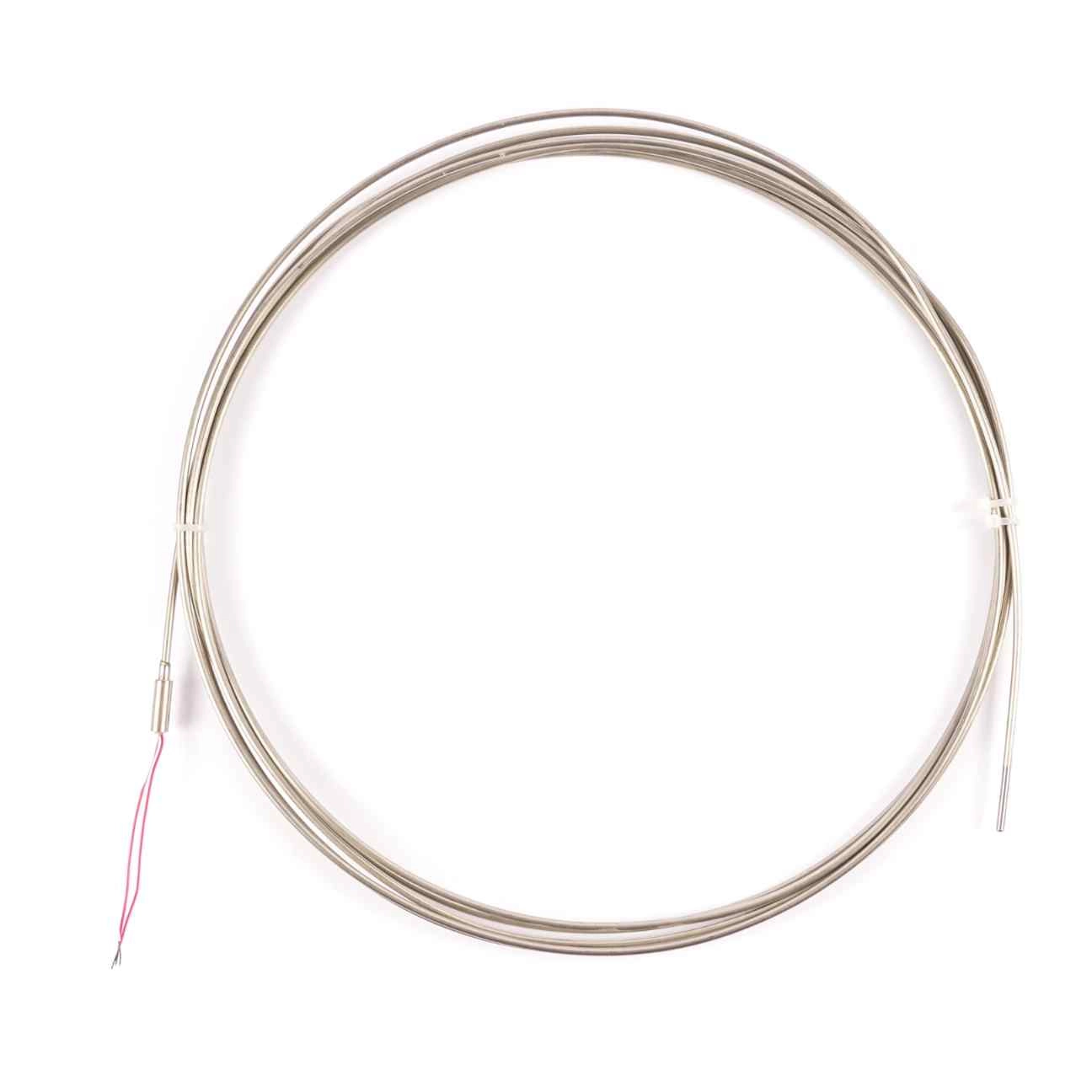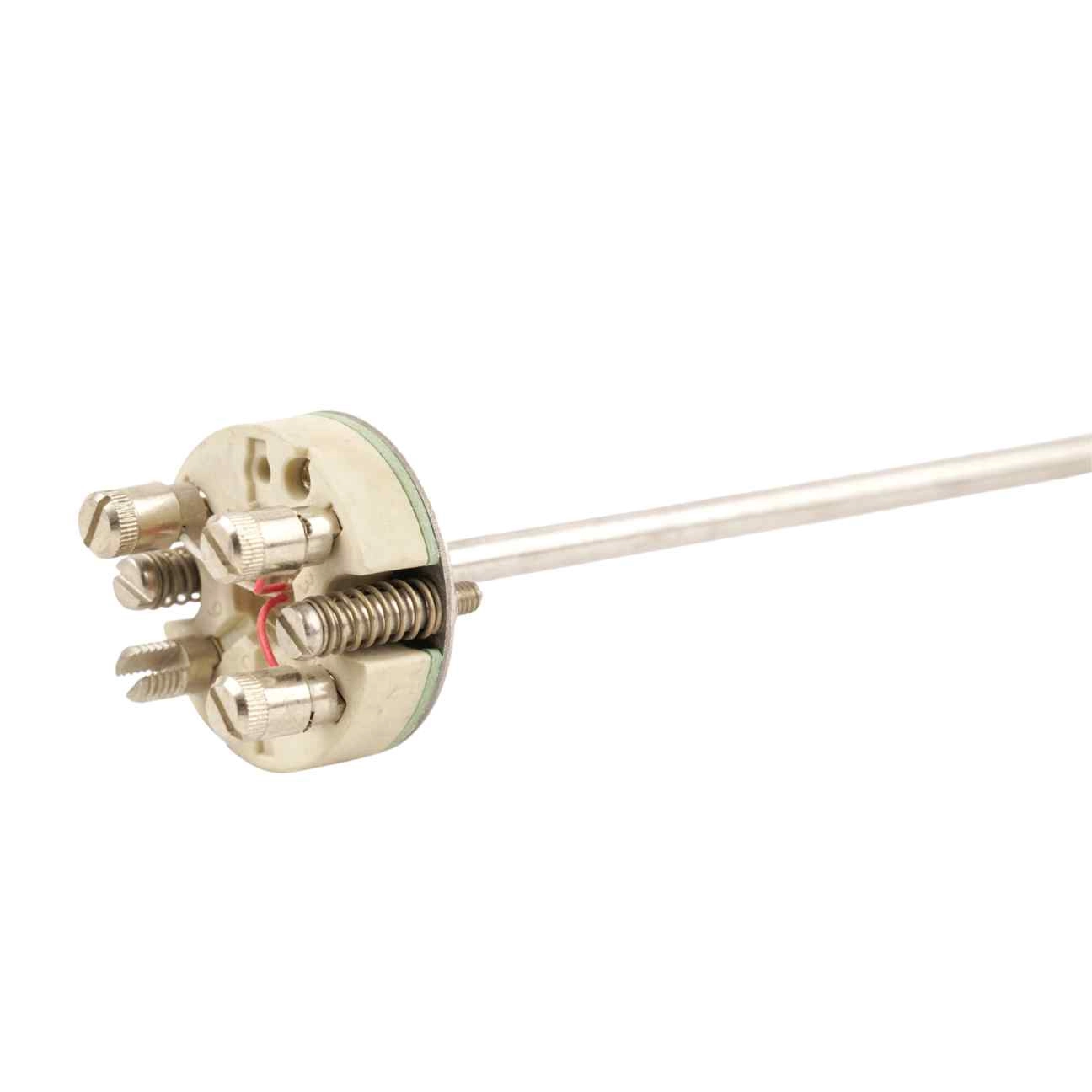What Is A Platinum Resistance Thermometer?
View Our Resistance Thermometers
A Platinum Resistance Thermometer (PRT) is a highly accurate temperature sensor that measures temperature by detecting changes in the electrical resistance of platinum. It is also known as a resistance thermometer and is widely used in industrial, scientific, and laboratory applications where precision and stability are critical.
View Detailed Technical Information: Resistance Thermometer
Overview
A PRT works on the principle that platinum’s electrical resistance changes predictably with temperature. By measuring this resistance, the sensor can accurately determine the temperature of its environment.
Key features:
- Highly accurate and stable over a wide temperature range
- Linear response makes calibration simpler
- Suitable for industrial, laboratory, and scientific applications
PRTs are often used in environments where precision measurement is essential, including:
- Industrial process control
- Scientific research and laboratories
- Food, pharmaceutical, and chemical processes
How Does A Platinum Resistance Thermometer Work?
A platinum resistance thermometer (PRT) works by measuring the change in electrical resistance of a platinum wire or film as temperature varies. Platinum’s resistance increases in a predictable and nearly linear way with rising temperature. This characteristic makes platinum ideal for accurate temperature measurement. The sensor element is housed within a protective sheath, and when current passes through, the resistance is measured and converted into a temperature reading using standard calibration curves.
What Are The Main Advantages Of Using Platinum RTDs?
- High Accuracy: Typically ±0.1 °C or better in standard industrial versions
- Excellent Stability: Maintains calibration over long periods
- Wide Temperature Range: Standard PRTs operate from –200 °C to +850 °C
- Durability: Platinum is chemically inert and resistant to corrosion
What Are The Different Types Of Platinum Rtd Sensors Available?
There are various types of platinum RTD sensors designed to meet different industrial needs. The most common include wire-wound RTDs, thin-film RTDs, and coil elements. Wire-wound sensors offer superior accuracy and durability for demanding applications. Thin-film RTDs provide faster response times and are more cost-effective, often used in OEM and general-purpose measurements. Additionally, RTDs vary by resistance value, such as PT100 and PT1000, indicating 100 or 1000 ohms at 0°C respectively.
FAQs
Q1: What does PRT stand for?
PRT stands for Platinum Resistance Thermometer.
Q2: How does a PRT measure temperature?
By detecting the change in electrical resistance of a platinum element as temperature varies.
Q3: Why use platinum?
Platinum has predictable, linear, and stable resistance characteristics, making it ideal for precise temperature measurements.
Q4: What is the difference between a PRT and a thermocouple?
PRTs measure temperature via resistance changes, while thermocouples generate a voltage based on the thermoelectric effect. PRTs are more accurate, but thermocouples respond faster and can handle higher temperatures.
Q5: Where are PRTs commonly used?
In industrial processes, laboratories, and scientific research where precise temperature measurement is required.




